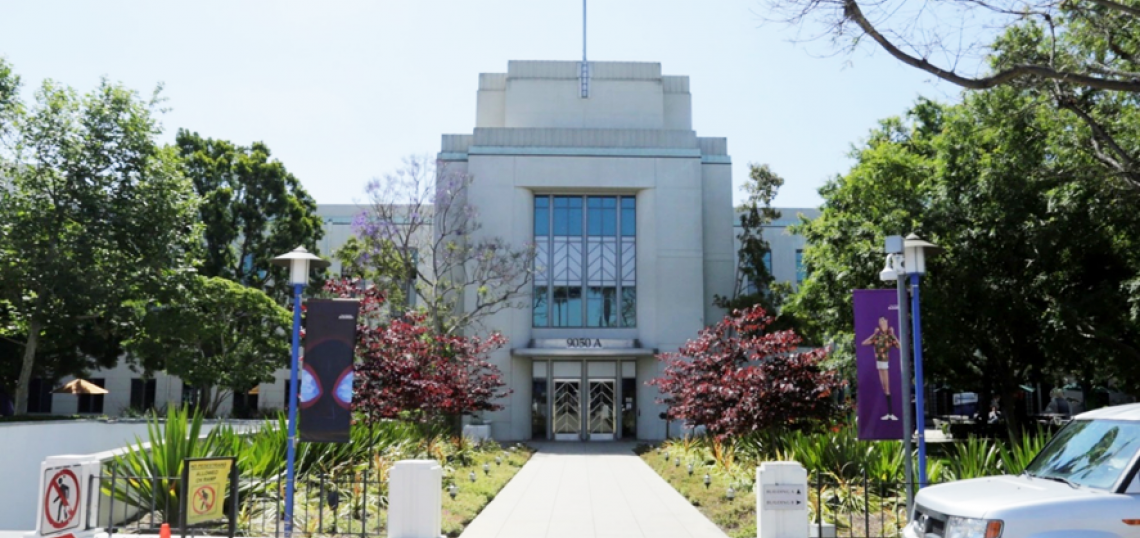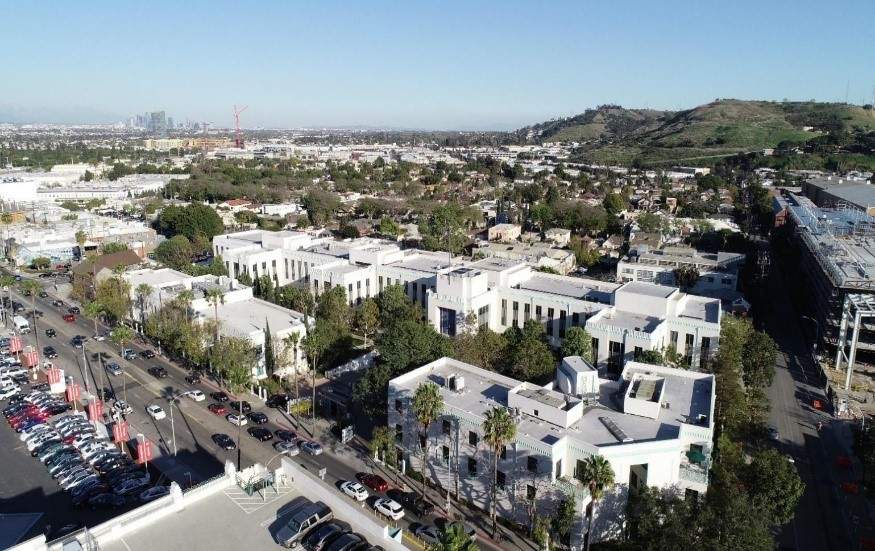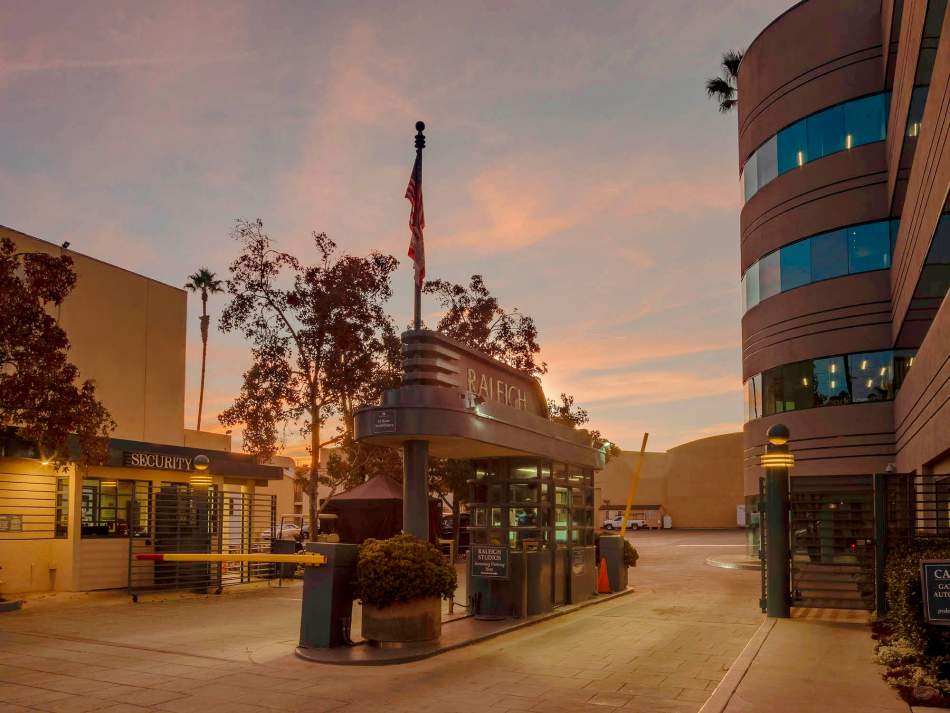Hackman Capital Partners is on a buying spree.
The Culver City-based firm, in partnership with Square Mile Capital, announced earlier this week that it has acquired the Sony Pictures Animation Campus at 9050 Washington Boulevard. The three-building campus, which houses Sony's Animation department, comprises approximately 182,000 square feet of office space, as well as a parking garage, a screening room, and other amenities for tenants.
The Sony Animation property sits directly across the street from the historic Culver Studios campus and the Culver Steps, two other Hackman Capital assets. Amazon has leased more than 600,000 square feet of office space between the two properties, which will house its Amazon Studios, IMDb, Amazon Video, and World Wide Advertising subsidiaries.
“We are delighted to add this world-class property to our portfolio of top-flight media office properties," said Hackman Capital Partners chief executive officer Michael Hackman in a news release. "Located across the street from The Culver Studios and The Culver Steps, the campus is uniquely situated in an area that has become a hotbed for creative industries.”
The purchase price for the Sony Pictures Animation campus is reportedly $160 million.
The announcement comes less than a week after Hackman took over management of Raleigh Studios in Hollywood, a 10-acre property across the street from Paramount Pictures which features 13 soundstages.
Although Hackman is known for its investment in production facilities over the past five years - most notably the CBS Television City complex in the Fairfax district - it has also made headlines for its 888 N. Douglas Street campus in El Segundo, which is slated to become the new headquarters of Beyond Meat, Inc.
Things to read from the past week:
- ‘We Are Forced to Live in These Conditions’: In Los Angeles, Virus Ravages Overcrowded Homes: "Perhaps nowhere else in America can the unequal toll of the virus be felt more dramatically than in Los Angeles, where suburban sprawl and freeways demarcate the neighborhoods of the haves and the have-nots....And now that the virus is coursing through the city’s densest neighborhoods, it has underscored the crisis in economic inequality and housing affordability that, even before the pandemic, was one of the region’s most pressing issues." (New York Times)
- New Affordable Housing Projects Prove We Can Tackle Homelessness Crisis: "The Los Angeles Community Action Network’s 30-bed EcoHood sustainable housing development in South Central pairs micro homes with solar power and other energy performance features. Funded from non-public sources, the Skid Row-based nonprofit’s property spotlights two prominent home building trends: downsizing and climate consciousness. Each of the 400-square-feet one- and two-bedroom residences includes a bathroom with shower, fully-equipped kitchen, living area and covered porch. Landscaped common areas and urban farming space will, ideally, help build a sense of community. The cost per bed is $100,000." (Knock LA)
- Over 100 Pedestrians Are Killed By Drivers In LA Every Year. Here's What We Found: "In 2019, 134 people were killed by drivers while walking in Los Angeles. That's about one death every two-and-a-half days. In fact, pedestrian deaths increased from 87 in 2014 -- or nearly 55% over 5 years. Hundreds more pedestrians are injured by drivers each year." (LAist)
- L.A. Doesn’t Need to Save Every Unremarkable Little Building: "I recently read a beautifully written requiem for a beloved taqueria adjacent to an East Hollywood subway station that will be torn down this year. But the story failed to mention three critical details. One, that it will be replaced by 187 units of permanent supportive housing, a property that’s 100 percent affordable — you truly cannot beat that. Two, the family that owns the taqueria is ready to move on, with their children possibly reopening another location. And three, the housing developers are deliberately reaching out to legacy businesses in the area, many of whom are at risk of being displaced, to fill ground-floor retail spaces and food carts at rents they can afford. It’s rarely this neat of a narrative, but this should be the model, and there’s no reason that the city can’t incentivize these types of policies to make it work for other developments." (Curbed)
- ‘Manna from heaven’: L.A. officials say Biden funding could get thousands of homeless off streets: "Local elected officials hope a shift in how the Federal Emergency Management Agency reimburses municipalities will breathe new life into an effort to rent hotel rooms for homeless people who are vulnerable to the virus and struggle to isolate." (LA Times)
- I Hope That We Can Be Together Soon: "Compton’s Black residents successfully fought to live there. They defeated the campaign waged by its previous majority-White population to keep Black families from purchasing homes in the area, a campaign that involved mob violence, cross burnings, blockbusting, and attempts to reinforce racially restrictive housing covenants that kept Black residents out of neighboring cities like Gardena, Lynwood, and South Gate. While there were some predominantly Black neighborhoods in the region at the time, such as South Central, Watts, and Baldwin Hills, Compton was the only city largely populated and run by Black residents." (LA Review of Books)
- Urbanism memo to President Biden: Think housing, transit ... and don’t forget the designers: "Big-city mayors likely are breathing a collective sigh of relief that the guy now in charge is Joe Biden — a guy whose nickname, “Amtrak Joe,” is derived from his frequent use of mass transit. Biden is unlikely to deploy federal agents to big cities just because. And he is more finely attuned to the dynamic places that cities can be....But there is a mountain of work to be done. The Biden-Harris administration is contending with a pandemic that has made more stark the racial, social and economic inequities of our cities, be it access to housing, green spaces or functional transit options — at a moment in which hundreds of thousands of people teeter on the brink of eviction in California alone." (LA Times)
- Virgin Hyperloop Aims to Get Angelenos to San Francisco in 45 Minutes — Within the Decade: "The Richard Branson-owned company unveiled its hyperloop concept video Wednesday, just two months after the company's first tested its design with passengers. Traveling several hundred miles per hour in a pressurized tube is no longer a vision of the far-distant future — Virgin Hyperloop engineers want to make it a reality in less than 10 years." (dot LA)
- A Modest Proposal for a Better NextGen Route 51 DTLA DASH Connection (Streetsblog LA)
- This Photographer Has Spent 30 Years Capturing L.A.’s Subways as They Take Shape: Ken Karagozian decades-long project of heading underground and shooting Metro’s construction projects exists where documentary meets fine art (LA Magazine)
- Metro Board Restores $24.3 Million in Cut Transit Service: "Metro riders are unlikely to see an immediate uptick in service. Metro’s already-slashed operations have been impacted by COVID, with illness resulting in increased absenteeism and missed bus runs. There is a lag time for Metro to hire and train new staff, and to ramp operations back up." (Streetsblog LA)
- Flash back to the ‘70s on an architectural driving tour of L.A.: The Westin Bonaventure, City National Plaza, the Triforium, the Blue Whale, and more! (LA Times)








